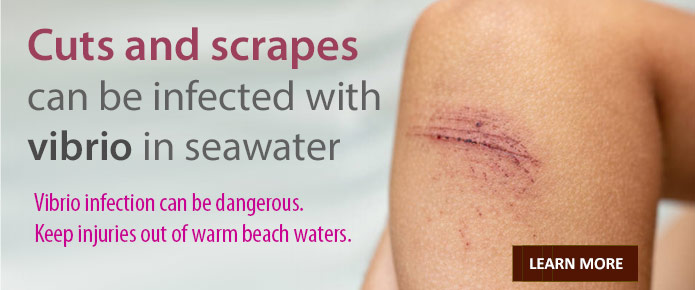Trisomy 18, known as Edwards Syndrome, is a rare condition resulting from genetic errors on the 18th chromosome. The disorder occurs in approximately 1 in 5,000 live births and much more commonly affects females than males. This disorder often results in physical deformities, defects in internal organs, and severe intellectual and developmental disabilities.
Information in Spanish Information in Vietnamese
Impact on Development
The severity of the impact of Trisomy 18 on development will depend upon the number of cells affected. Some children will have three copies of chromosome 18 in all of their cells (complete trisomy 18) while others have three copies in only some of their cells (mosaic trisomy 18) or extra parts of chromosome 18 attached to another chromosome (partial trisomy 18).
Most children born with Trisomy 18 will have heart defects. Other significant health concerns may include defects in the structure and functioning of various internal organs, including the lungs, kidneys, stomach and intestines. Some will have malformations of the head, neck, face, eye, ears, hands, feet and spine.
In addition, children with Trisomy 18 have slow growth, significant neurodevelopmental delays, especially motor difficulties which impair daily living such as feeding or crying, severe intellectual disabilities, and delayed speech. Some children may also have vision or hearing impairments.
Clinical Course and Life Expectancy
Children with Trisomy 18 often have restricted growth prenatally and continue to have slow growth after birth. Some initial concerns may continue consistently throughout life, improve or worsen, or change in presentation. For example, some children are born with weak muscles which then become rigid.
It is hard to predict how long a child with Trisomy 18 will live. Most children with Trisomy 18 do not live beyond the first two weeks of life and fewer than 10% will live beyond the first year of life typically due to significant heart or lung defects. A small number will reach their teen years but often require continuous care and extensive support for daily living.
Treatment Options
Although there is no cure for Trisomy 18, children may receive treatment to manage their specific symptoms and health conditions based on the decisions of their medical team and family. Initial treatment focuses on stabilization and survival. Some families may opt to focus on palliative or hospice care. Treatment may include surgical repairs or less invasive methods to promote functioning. For example, treatment to address feeding difficulties may include surgically repairing a cleft palate or providing nutrition using a feeding tube, depending upon the needs of the specific child and the joint decision of families and medical professionals. Children with Trisomy 18 who are less medically fragile may receive more developmental services to maximize their functioning and provide the best quality of life possible.
For More Information
- National Library of Medicine - Medline Plus: Trisomy 18
- MedicineNet Trisomy 18 (Edwards Syndrome)
- National Organization for Rare Disorders Trisomy 18
Resources for Families
First-Call Programs and Trisomy 18 Hotline
- The Genetic and Rare Diseases Information Center (GARD) GARD provides reliable, and easy-to-understand information about rare or genetic diseases in English or Spanish. Call 1-888-205-2311 for information.
- Chromosome Disorder Outreach This parent-formed organization provides support and an extensive library of articles.
Support Services
- The E.WE Foundation is an Alabama-based healthcare advocacy organization founded by parents of a child with Edwards Syndrome. The Foundation has programs offering comfort care for families, economic assistance program to help with the financial burden associated with rare medical complexities and specialized medical care, and instructional resources for health literacy, community education, patient advocacy, and public policy.
- Hope for Trisomy is made up of families of children with Trisomy 13, 18, and related conditions to fund research and promotes education. Hope for Trisomy also provides support and services to families and host events to raise awareness
- The Mississippi Division of Medicaid provides access to health coverage for children with disabilities
Resource Centers or Clearinghouses
- National Organization for Rare Disorders Trisomy 18
- The Chromosome 18 Registry and Research Society is a family-driven advocacy organization focused on a range of disorders associated with Chromosome 18, including Trisomy 18.
National and Local Organizations
- Trisomy 18 Foundation provides a caring community for families, educates and supports medical professionals, and encourages the search for treatments and preventions of Trisomy 18.
- SOFT - Support Organization for Trisomy 18, 13, and Related Disorders is a network of families and professionals to promote parent-professional relationships and provide support to families in the diagnosis and care of Trisomy 18, 13, and other related chromosomal disorders.
Education and Support Programs
- Children and Youth with Special Health Care Needs (CYSHCN) offers Care Coordination services for children with special healthcare needs from birth through twenty-one years of age.
- First Steps Early Intervention offers services and supports according to an Individualized Family Service Plan for infants and toddlers with developmental delays.
- Perinatal High Risk Management/Infant Services System (PHRM/ISS) offers case management, enhanced access to health care, nutritional and psychosocial support, home visits, and health education for high-risk pregnant women and their babies less than one year old.
Resources for Healthcare Providers
Provider Resources for Trisomy 18
- American College of Medical Genetics ACT SHEET – Trisomy 18: Positive Cell Free DNA Screen.
- Prenatal Diagnosis for Congenital Malformations and Genetic Disorders: Practice Essentials, Noninvasive Techniques, Invasive Techniques
- Medscape Trisomy 18
Prenatal Screening Counseling for Families
- The American College of Obstetricians and Gynecologists resources
General Resources
- Cereda, A., and Carey, J.C. (2012). The trisomy 18 syndrome. Orphanet Journal of Rare Diseases, 7(81).
- Dotters-Katz SK, Kuller JA, Grace MR, Laifer SA, Strauss RA. Management Considerations for Ongoing Pregnancies Complicated by Trisomy 13 and 18. Obstet Gynecol Surv. 2016 May;71(5):295-300. doi: 10.1097/OGX.0000000000000304. PMID: 27182826
- Glinianaia SV, Morris JK, Best KE, Santoro M, Coi A, Armaroli A, et al. (2020) Long-term survival of children born with congenital anomalies: A systematic review and meta-analysis of population-based studies. PLoS Med 17(9): e1003356. https://doi.org/10.1371/journal.pmed.1003356; https://journals.plos.org/plosmedicine/article?id=10.1371/journal.pmed.1003356
- Goel N, Morris JK, Tucker D, et al. Trisomy 13 and 18-Prevalence and mortality-A multi-registry population based analysis. Am J Med Genet A. 2019;179(12):2382-2392. doi:10.1002/ajmg.a.61365
- Kirby RS. The prevalence of selected major birth defects in the United States. Semin Perinatol. 2017 Oct;41(6):338-344. doi: 10.1053/j.semperi.2017.07.004. PMID: 29037343.
- Lantin-Hermoso MR, Berger S, Bhatt AB, Richerson JE, Morrow R, Freed MD, Beekman RH. The Care of Children with Congenital Heart Disease in Their Primary Medical Home. Pediatrics 2017;140(5);e20172607; DOI: https://doi.org/10.1542/peds.2017-2607
- Leuthner SR, Acharya K. Perinatal Counseling Following a Diagnosis of Trisomy 13 or 18: Incorporating the Facts, Parental Values, and Maintaining Choices. Adv Neonatal Care. 2020 Jun;20(3):204-215. doi: 10.1097/ANC.0000000000000704. PMID: 31996562.
- Lipkin, P.H., Okamoto, J., and the Council on Children with Disabilities and the Council on School Health. The Individuals With Disabilities Education Act (IDEA) for Children With Special Educational Needs. Pediatrics 2015;136;e1650. DOI: 10.1542/peds.2015-3409;
- UpToDate: Evidence-based Clinical Decision Support provides the latest evidence and best practices for clinicians

